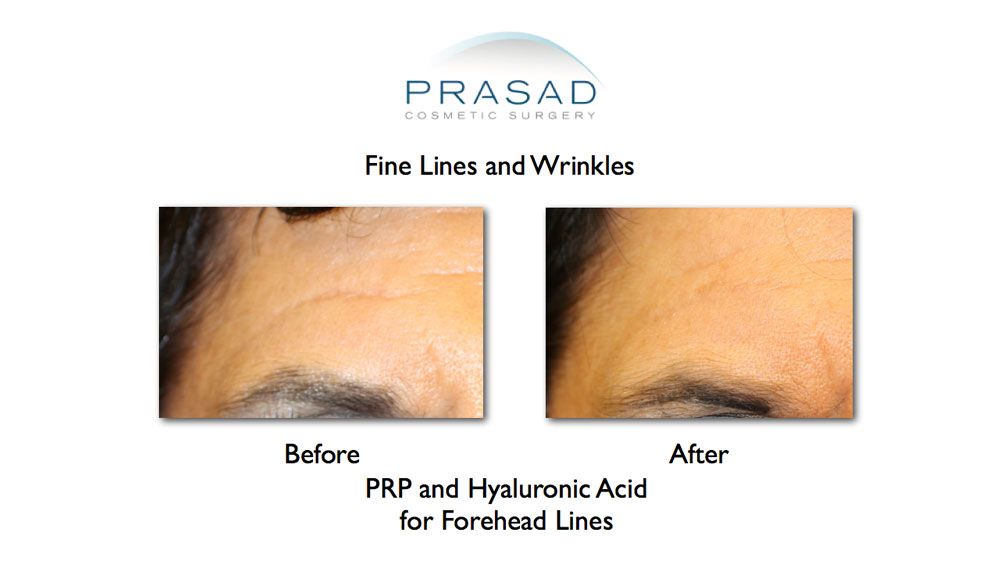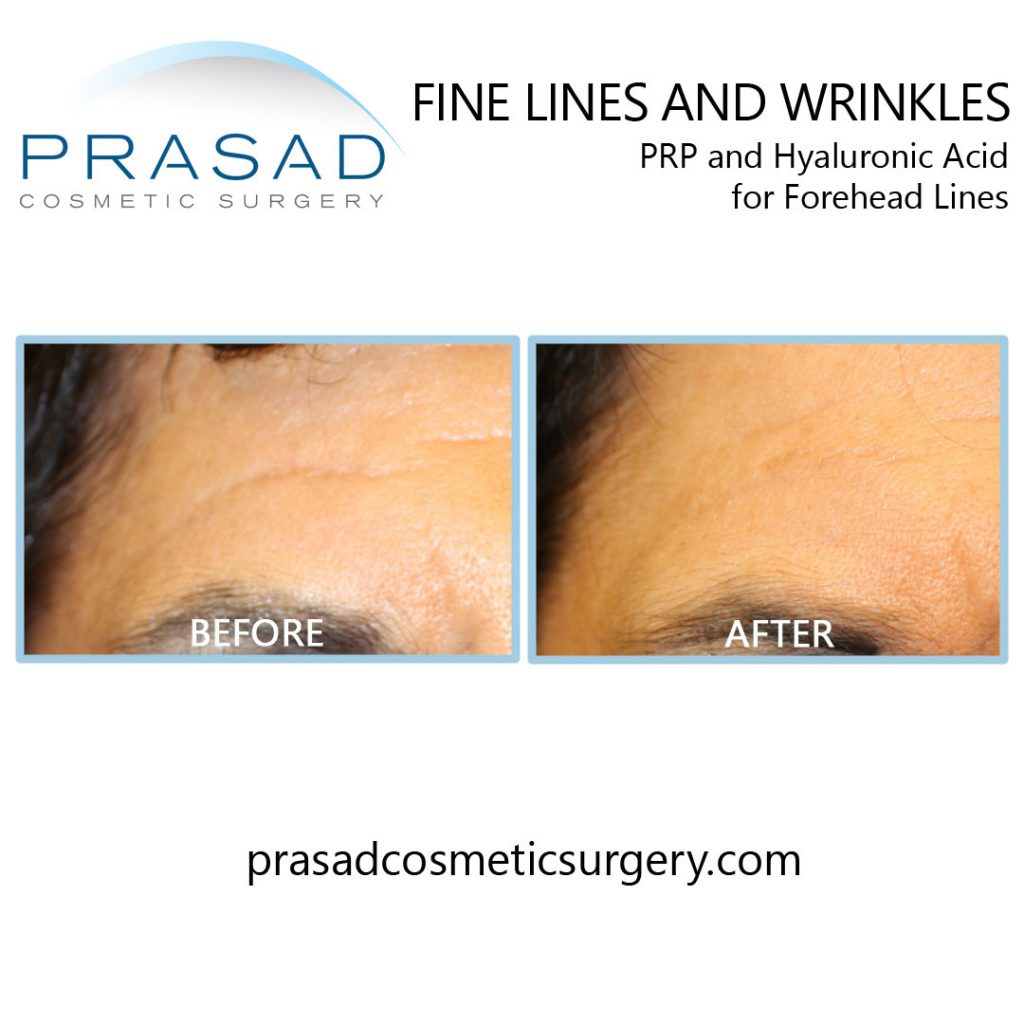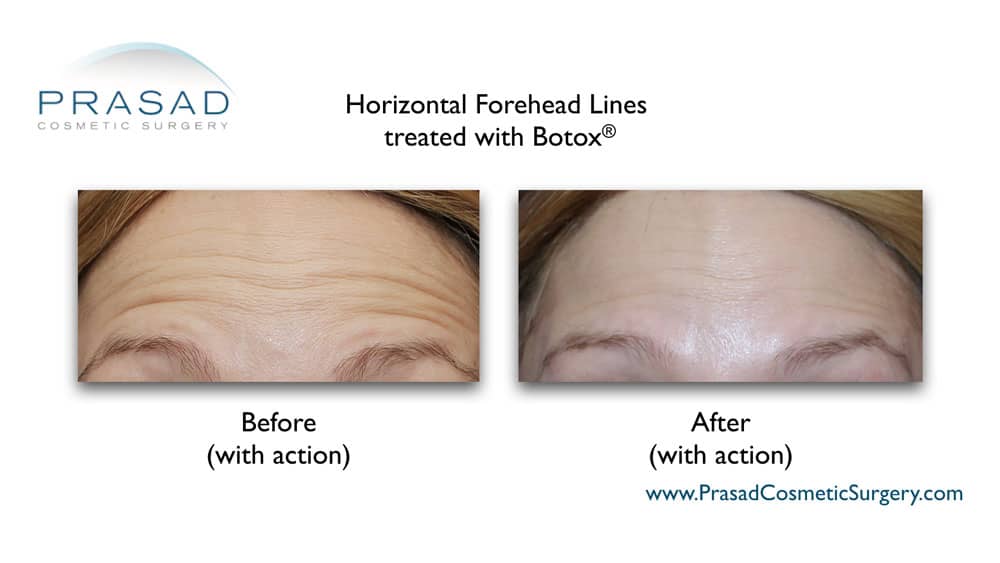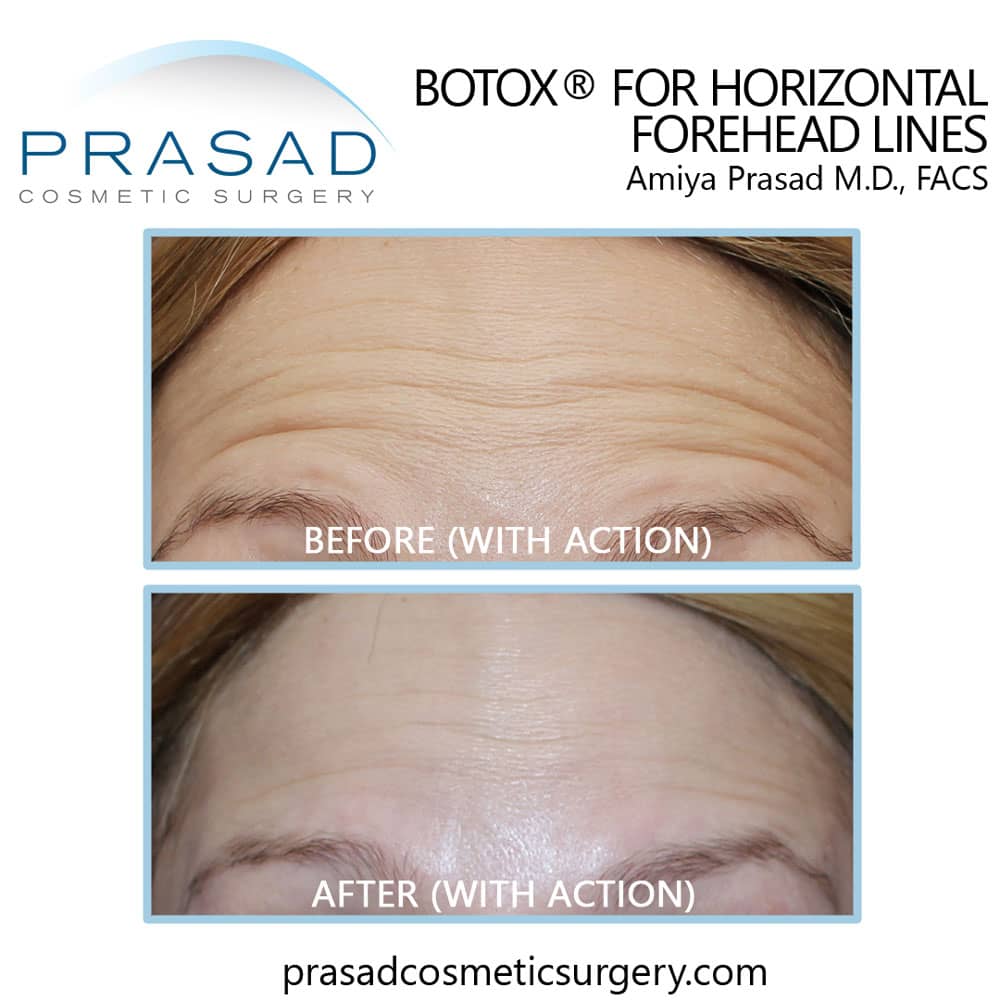How to Get Rid of Forehead Wrinkles?
Forehead wrinkles are a common problem often associated with aging, but even younger people can have them due to repeated facial expressions which cause creases to form in the forehead. Other factors include genetics, environmental factors such as prolonged sun exposure, and lifestyle factors like smoking, and diet. Discussing treatment options for forehead wrinkles is something I do in my practice every day.
The treatment of facial aging; and premature aging changes related to genetics, and environmental influences are a core part of my practice. A well known treatment for forehead lines is the use of neurotoxins such as Botox, Dysport and Xeomin. As an Oculoplastic surgeon, I was among the first group of doctors administering Botox for patients before it was used for cosmetic purposes, starting in 1993. Neurotoxins like Botox work by blocking nerve signals from the brain to the treated muscle, which reduces muscle activity, and in turn reduces the creasing or wrinkles from facial movement.
I am also known for my work with other injectable treatments like cosmetic fillers, which can also be used to improve the contour of the forehead. I was also among the first group of cosmetic surgeons to adopt regenerative medicine technology like platelet-rich plasma (PRP) for aesthetic purposes, which I also find useful for this area, as PRP improves skin quality, texture, and vascularity. In addition, I have extensive experience with brow lifting surgery, which can also have an impact on the appearance of forehead lines.
Patients come in complaining about their forehead wrinkles because of the visibility of these lines on a large area of the face, making them feel like they have an older appearance.

What causes forehead wrinkles?
There are 2 factors which contribute to the development of forehead lines.
- Continual creasing of the forehead skin due to facial expression and movement;
- The progressive loss of collagen and elastin in the forehead skin.
While both causes are seen with facial aging, environmental factors like sun exposure, and lifestyle factors like smoking can lead to accelerated breakdown of collagen and elastin fibers in the forehead skin, which leads to these wrinkles. Frequent raising of the eyebrows causing the forehead to repeatedly crease can also make lines on the forehead be visible prematurely.
One important condition which often results in forehead lines forming, is the presence of eyelid ptosis. Eyelid ptosis means the upper eyelid position is low because of a defect or injury of the muscle which lifts the upper eyelid called the levator muscle. Unconsciously, people with ptosis are constantly raising their eyebrows to try to lift their drooping upper eyelids to see better. This also occurs with eyebrow ptosis, and excess or hooded upper eyelid skin called dermatochalasis.
How to treat forehead wrinkles?
There are several treatments to address decreased collagen and elastin in forehead skin. Laser, radiofrequency, or microneedling can have a smoothing and tightening effect on the forehead skin, through stimulation of collagen production as a response. The principle is that the body naturally produces collagen as an injury response, so these medical devices create controlled injuries to stimulate a collagen response.
There are also ways to induce collagen production with virtually no injury. Platelet-rich plasma or PRP is the concentration of wound healing and growth factors present in your blood, which act when your body has a cut. PRP is basically a concentrated form of your body’s natural wound healing factors, which generate collagen stimulation as part of the healing . The concentrated wound healing and growth factors within the PRP serum improves overall skin quality, health, and thickness.


I often combine PRP treatment for forehead lines with a hyaluronic acid filler using a device and method called Skin Boosting. Placing hyaluronic acid into the dermis increases the volume within the dermis, to help lines, wrinkles and folds appear less deep. PRP combined with hyaluronic acid also has a synergistic effect, increasing the effects of collagen induction.
How to reduce forehead wrinkles?
To treat and reduce forehead wrinkles due to muscle movement, I use an injectable neurotoxin like Botox, Dysport, or Xeomin. Strategic placement of a neurotoxin into a muscle called the frontalis muscle which is responsible for lifting the eyebrows, reduces the activity that causes the deep lines to form.
If you think of the forehead skin as paper – the more it’s crumpled with activity and movement, the more it creases, so by reducing movement, there is less creasing. With consistent application of Botox, the reduced movement improves the appearance of the forehead lines even at rest. It is important to have Botox done by an experienced doctor who understands what would look right for you. It’s common to see overdone Botox in the forehead resulting in a frozen, unnatural, and expressionless look.
In my opinion, just the right amount of Botox placed in the right way, you can improve the appearance of the forehead lines, but still allow forehead movement to be able to make natural facial expressions.


Botox or botulinum toxin can also be used for non-surgical brow lifting, known as the Botox brow lift to relieve frown lines or number “11” lines. Botox is placed in the eyebrow depressor muscles, which are the corrugator, procerus and orbicularis oculi muscles. By relaxing these depressor muscles, and only partially relaxing the elevator muscle called the frontalis, a lift can be achieved while still reducing the appearance of forehead lines.
Surgical brow lifting is also an option to remove redundant skin and raise the forehead to help with lines. There are several brow lifting techniques which can be customized to the individual’s needs. The surgeon’s experience, and thorough planning prior to surgery are keys to a predictable outcome.
Most swelling and bruising from surgical brow lifting lasts about one to two weeks and the healing process like any other surgical procedure continues for 1 year.
While there are several options to treat forehead lines, for most patients it can be done without surgery, and with minimal if any recovery time. However, with time it is important to maintain results by periodically relaxing the muscles, building on skin quality improvement, and sustaining volume to minimize the depth of forehead lines.
